It hasn’t been lost on despairing frontline police officers that it has taken the tragic, brutal death of a 17 year-old white girl to propel the issue of knife crime and its attendant issues into the headlines. It is those police officers who, on a daily basis, turn on their ‘blues and twos’ in order to get to the scene of a stabbing or shooting frequently not knowing what they will find when they get there.
Will they be confronted with an individual or perhaps a group armed with deadly weapons or will they be battling to keep the unfortunate victim alive until the arrival of paramedics? They then, of course, have the harrowing task of informing relatives that their loved one has been badly hurt or killed as a result of the violence.
It is intriguing to watch politicians wriggle like live bait on the end of a fishing line as questions are put to them about the reductions in police funding and numbers leading to a rise in violent crime and still members of the government refuse to acknowledge any responsibility or correlation between the two. At the time of writing Prime Minister Theresa May has stated on TV that reductions in police numbers are not linked to the rise in violent crime: Breathtakingly dishonest but this is sadly what the public has come to expect from most politicians.
The blunt fact is that even before the policing cuts began to bite, the police forces of England and Wales were towards the bottom of the European ‘police per population ratio’ league table. Quite how Prime Minister David Cameron and Theresa May could look at that table after they took office and still consider that swingeing cuts were viable is beyond belief. As can be seen, we are now fourth from bottom:
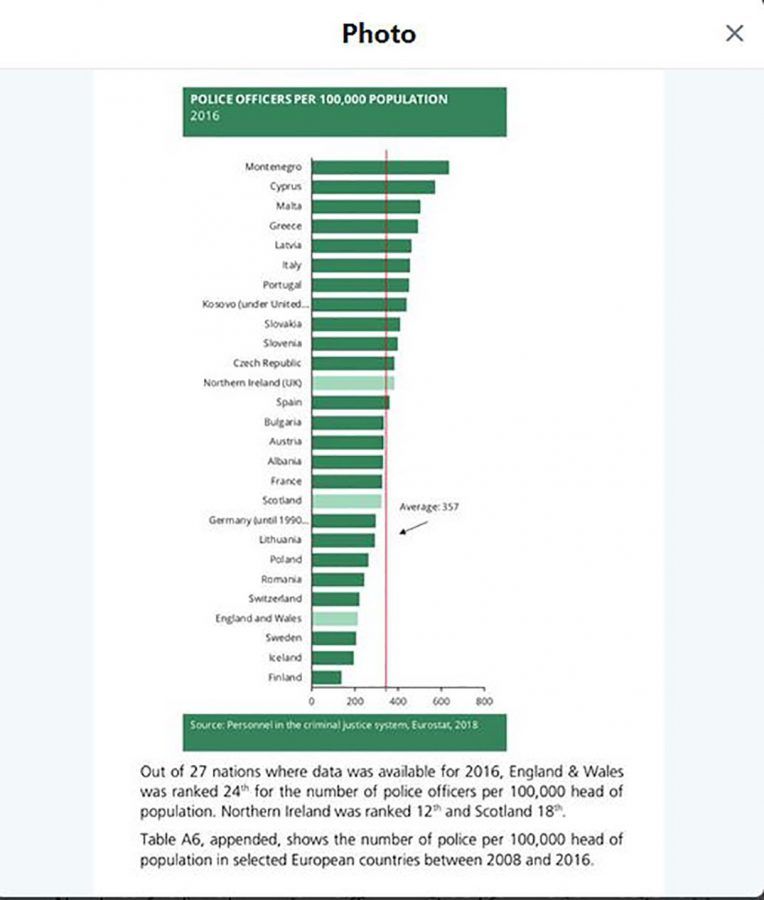
The riots of 2011 failed to curb the governments appetite for cuts and we had the ludicrous mantra that gangs were somehow not a factor; presumably gang ‘members’ were at home sipping their Horlicks and watching New Tricks as police were attacked, buildings burnt and shops looted. In fact, those in gangs have become adept at disguising their identities over the years; the result of battles with their rivals and a knowledge that the use of hoods, masks and balaclava’s will handicap any police investigation. A number were arrested later on during the subsequent investigation and for a while gangs were on ‘the back foot.’ But sadly, due to cuts, it didn’t remain that way.
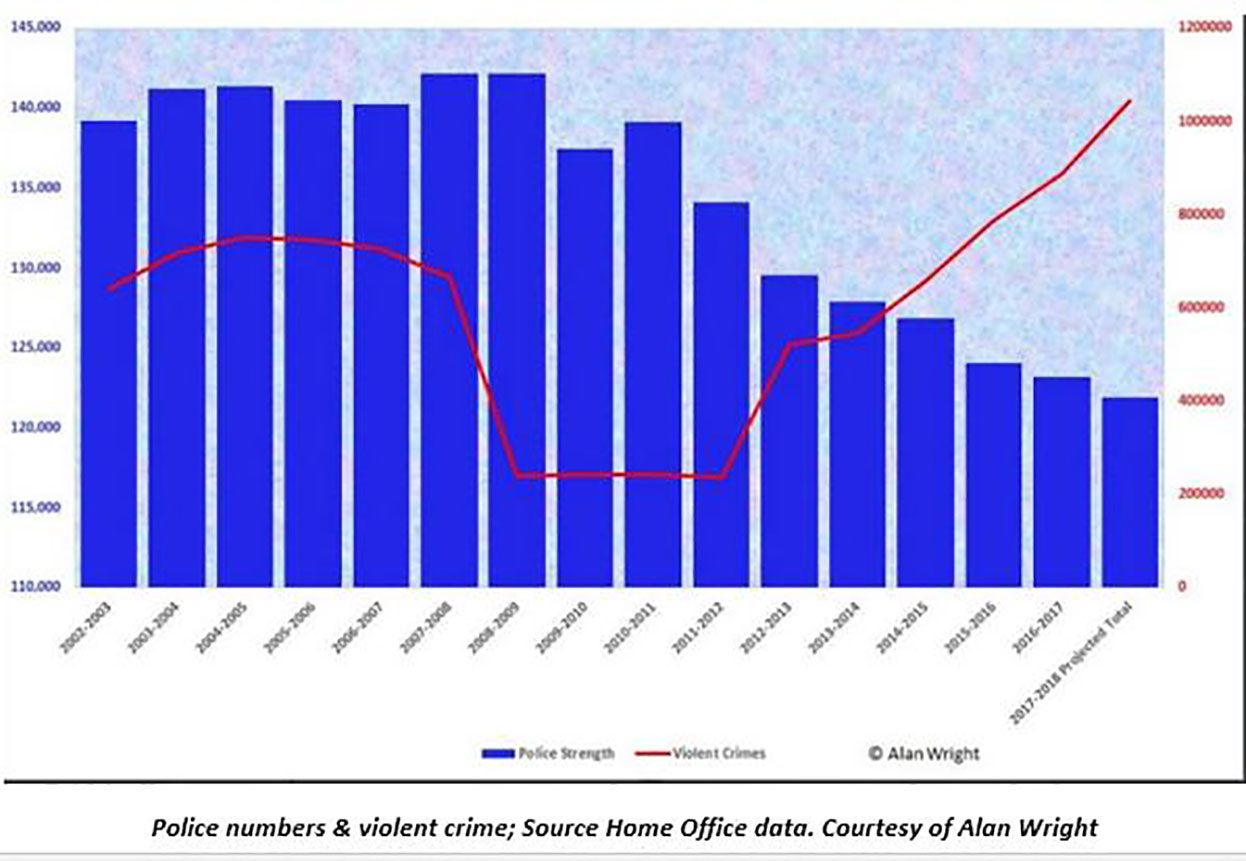
Police will never forgive or forget the scathing comments of Theresa May when she referred to front line police concerns about cuts as ‘crying wolf’ and ‘scaremongering.’
May and Cameron; Blood on their hands
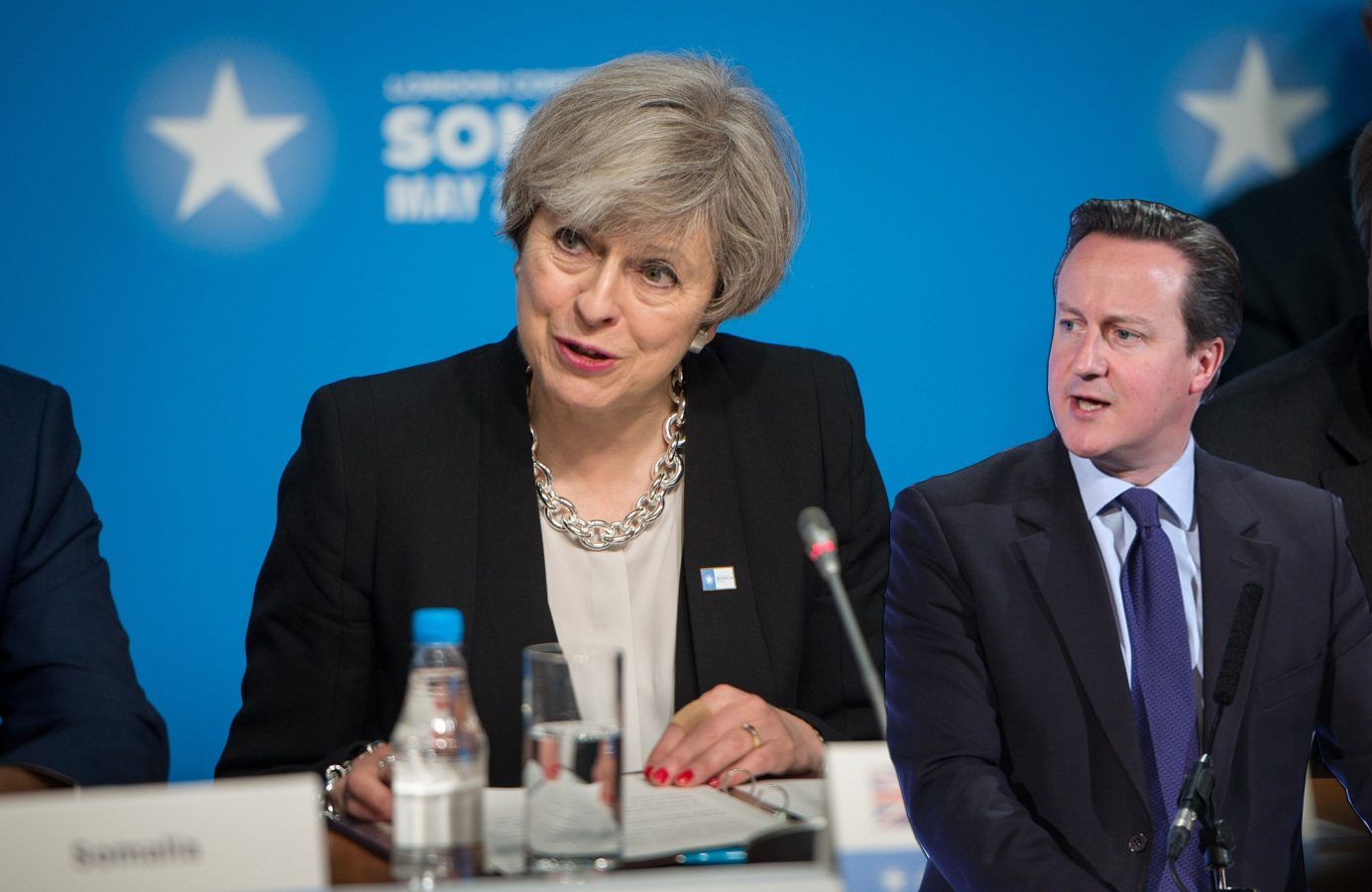
Theresa May’s cuts have had a devastating effect on policing and communities yet the cataclysmic effect of these policies didn’t end there. She and David Cameron began to interfere in operational policing that looked very much an attempt to garner support from the black community.
The Home Secretary became extremely critical of stop and search as indeed did the then Prime Minister David Cameron. In a speech Cameron made to the Tory faithful just two days after PC Dave Phillips was killed by a thug when he was trying to stop a stolen vehicle, the then Prime Minister’s one reference to police was as follows: “Opportunity doesn’t mean much to a black person constantly stopped and searched by the police because of the colour of their skin.”
Theresa May’s onslaught on stop and search was unremitting. Even in her 2015 election manifesto, she threatened legislation against police in relation to stop and search. We’ve not heard too much about that over the past three years as carnage has spread like a cancer across the country.
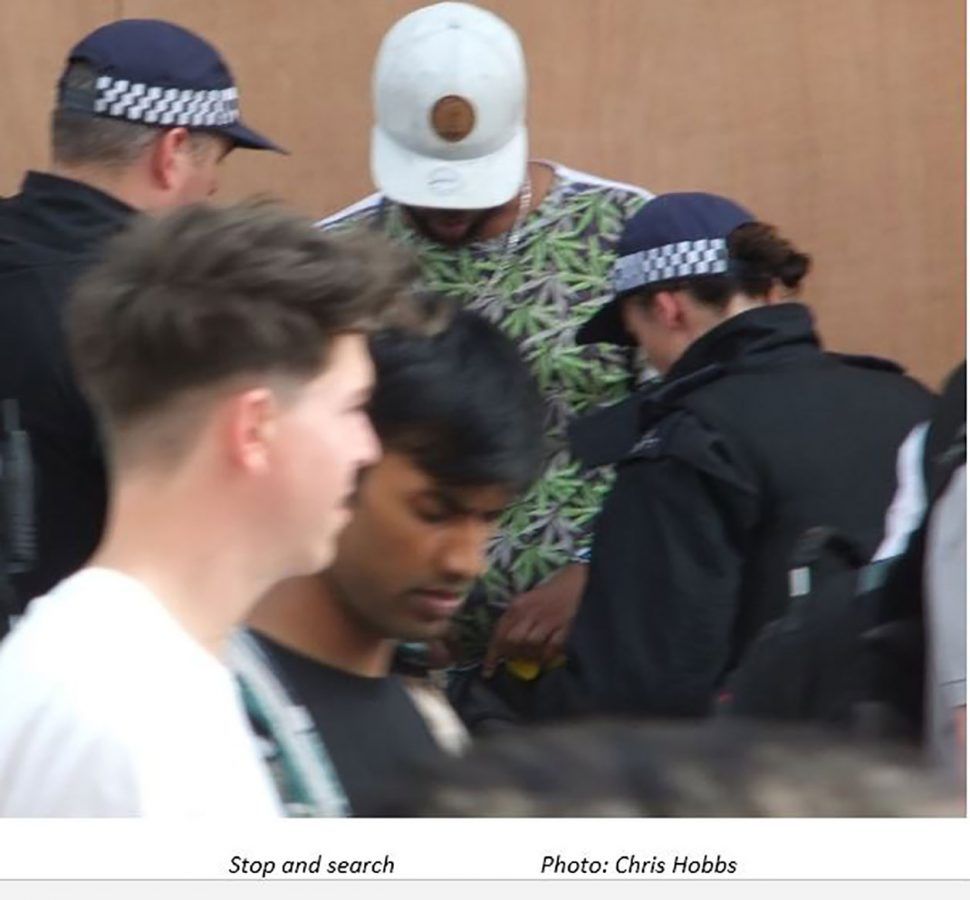
The effect of Theresa May’s constant stop and search criticisms however, duly led to a reduction. True that, as the number of stop and searches fell dramatically, the proportion of those which were successful rose as officers focused on ‘certs.’ Hidden from the public was the fact that in London, the total number of arrests resulting from stop and search fell by 1,000 a month and while the stop and search line on the graph was falling, the number of violent offences on the same graph was rising.
Criticism of stop and search didn’t end there. The College of Policing, to the despair of frontline officers, produced a paper saying stop and search was largely ineffective. This ignored the simple fact, namely that almost all victims of fatal knife and gun attacks would still be alive had their attackers been stop and searched by police before encountering their victims and that each knife, firearm or other lethal weapon taken off the streets potentially saves a life. In August the Met took 300 potentially lethal weapons off the streets as a result of stop and search, yet no politician or activist is prepared to even speculate exactly how many injuries and perhaps deaths these seizures may have prevented.
Also ignored by ministers and critics is Home Office research which suggests that the black community is not disproportionately targeted but of course that wouldn’t suit political agendas be they on the left or the right.
It’s interesting to note that London mayor Sadiq Khan was an avid opponent of stop and search lining up alongside black and left-wing activists. Having tasted reality in terms of carnage on the streets, his attitude appears to have changed yet still his support of police appears lukewarm and still, on his watch, police stations continue to be closed including those in the heart of gang- controlled areas.
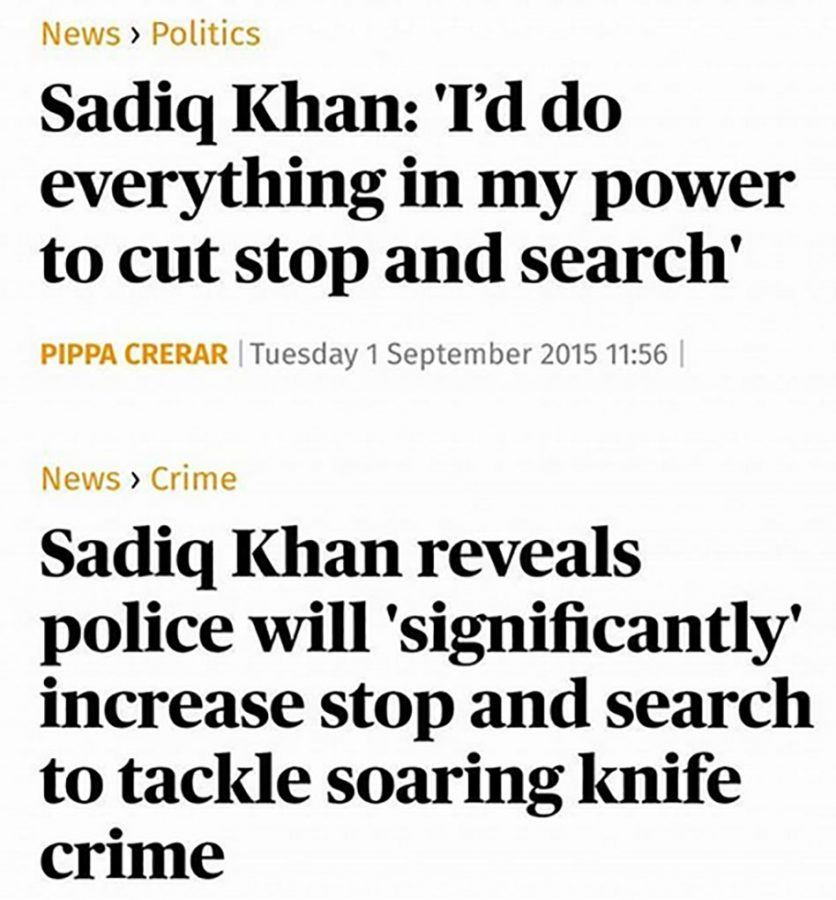
Meanwhile the Mayor’s Office for Policing and Crime (MOPAC) appears to be becoming ever more bloated using cash that would be better spent on frontline policing.
But to blame London’s mayor for the knife crime epidemic that has spread across London and then to much of the country is, to say the least, harsh.
Politicians and Activists.
After the riots, I was quick to praise the calm, measured response of David Lammy; indeed, in a short work of fiction that peeked into the future, I even earmarked him as Prime Minister. Yet his criticism of police has become unremitting. Diane Abbott has also been critical of police in marked contrast to her supportive shadow minister of policing, Lou Haigh.
In addition to politicians, police officers have to contend with so-called activists who constantly criticise and never praise police officers and indeed are never challenged by London’s Mayor. Criticism of the Met’s gang matrix may, in part, be justified, but more energy appears to spent criticising the matrix and stop and search rather than expressing concern as to the deaths occurring on our streets. Life saving efforts by police officers are never praised while police are often referred to in disparaging terms.
Also causing dismay amongst the ranks of serving officers is criticism from Leroy Logan, a former black Met senior officer. He has been especially prominent in the aftermath of the murder of Jodie; whilst condemning cutbacks he again criticised stop and search and suggested that where stop and search has been cut, violent crime has also reduced. I’ve previously issued a challenge to those hostile to stop and search, yet thus far there seem to have been no takers.

One well known activist who I engaged in conversation on twitter constantly referred to police officers as ‘racist pigs’ while another called a black police officer an ‘arse licking uncle Tom’. Little wonder, given the level of abuse directed toward police by those from within their own community, that the Met and other forces find it difficult to recruit black officers. Little wonder too that given the hostility toward stop and search from not just activists but leading members of government, police officers feel out on a limb when undertaking stop and search.
National Police Chiefs Council
Cynical members of the police community appear to hold the view that most very senior police officers (but not all) are more concerned with prospective knighthoods and peerages than opposing the government’s damaging cuts. Certainly, the National Police Chiefs Council (NPCC) has hardly been a thorn in the side of this and the previous coalition government, although, in fairness, those Chief Constables whose bosses were Conservative police and crime commissioners probably thought discretion was the better part of valour; sadly, we see here the result of the politicisation of our police.
The sudden, recent appearance of former Met commissioner Lord Hogan-Howe into the current furore has also caused less than favourable comments based, again, on his lack of resistance to cutbacks, the reduction of stop and search on ‘his watch’ and his previous style of management. Officers pointed out to me today that under Hogan-Howe they were actually rebuked by their senior officers for carrying too many ‘stops and search.’ Cynics may well claim that his suggestion of a ‘violent crime’ Tsar is on a par with Yosser Hughes ‘Gissa job.’
Met commissioner Cressida Dick however, has stepped into the maelstrom by stating that cuts in police numbers have impacted on violent crime thus contradicting the prime Minister and for which she will be applauded. She also pointed out that in London, black youths were disproportionately involved in gangs and violent crime as both offenders and tragic victims.
The Gangs: (London ain’t Glasgow)
Much has been said about Glasgow’s reduction in knife crime due to its public health approach. It has however, been Police Scotland officers who have pointed out that the public health approach was accompanied by zero tolerance of knife crime together with vigorous stop and search operations.
Yet the comparison between London’s gangs and those of Glasgow are misleading, although to read Amnesty’s report reviewing the gang matrix and together with comments from so-called activists, you could be forgiven for thinking that London’s gang problem was a figment of the Met’s imagination.
London’s gangs are more than simply criminal organisations. They are part of a whole youth culture with its own often impenetrable language plus the inevitable drill music. The movements of drill music rapper’s in and out of prison are faithfully observed and indeed one famous east London rapper has just been sentenced to more than 20 years in prison for firearms offences.
Gangs have followings like football teams as do individual gang rappers and ‘leaders.’ Points are scored for stabbings and shootings. Despite efforts by YouTube in ‘taking down’ drill videos, they still appear. A recent drill music video by a well-known, recently released from prison rapper linked to Broadwater Farm achieved 325,000 views in less than three days.
Some gangs are well established and have been in existence for more than 20 years. At present several of those gangs are engaged in what could be described as an all-out war in north London which have resulted in several violent incidents including a murder.
Gang ‘fund raising’ is not just the result drug dealing and county lining; fraud is becoming increasingly prevalent and here the gang’s fraudsters are assisted by associates who are employed by mobile phone companies and other organisations that have access to personal data.
The malevolent influence of gangs is not confined to issues such as county lining. Where they are active, they are massively detrimental to the quality of life of young people in that area who feel they take their life in their hands as soon as they step outside their front door.
Gangs have a disproportionate influence in schools where even one or two gang members or affiliates can cause havoc. Those criticising school exclusions should perhaps stand in front of a class containing these individuals and see how well they cope. Sadly, of course, many support services for young people have been lost to austerity including children’s services, sure start centres, youth services and clubs, special needs departments and staff together with children’s and adolescent’s mental health services.
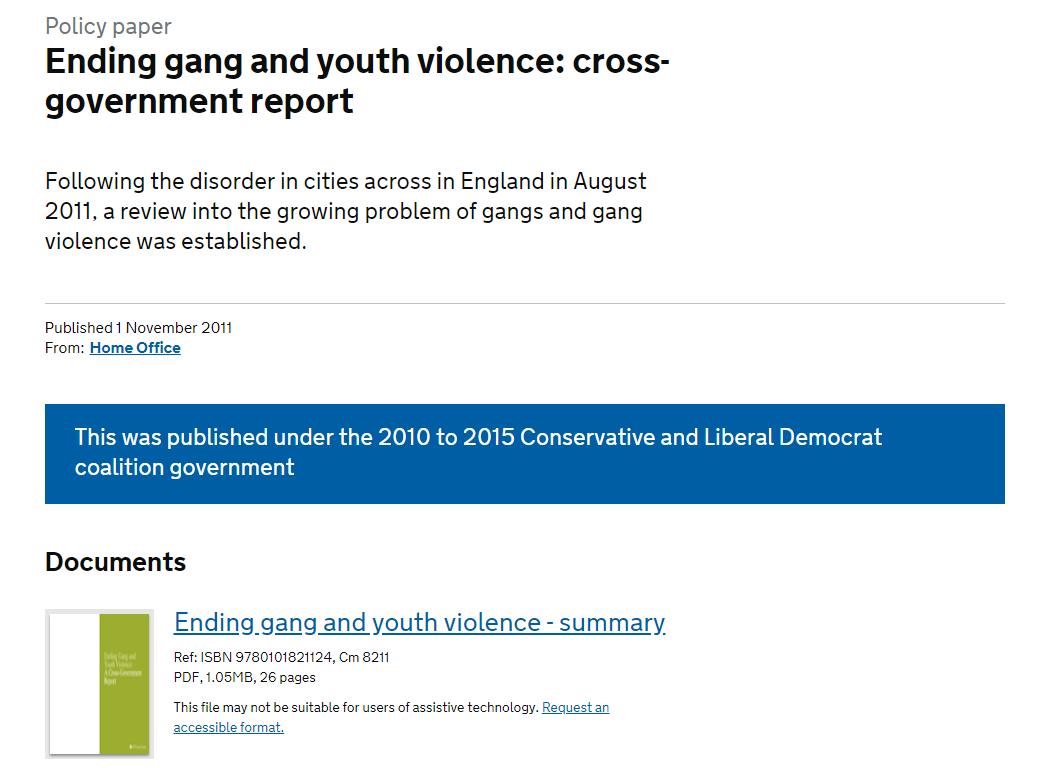
Groundhog day: The 2011 government report on ending gang and youth violence
The Home Office and Drugs
It seems one aspect of this problem most are agreed on is that drugs are one of the major factors that drives the current violence. It seems we have managed to acquire the dubious accolade of the cocaine ‘capital’ of Europe with even eels in the Thames being affected by cocaine contaminated river water.
How can this be the case given we live on an island surrounded by water? The responsibility again rests with the individual who has created a ‘national knife crime emergency.’ The UK Border Force was Theresa May’s creation and has been in disarray ever since. Morale as measured by the Home Office, is low and drugs, despite Home Office denials, are a lesser priority with figures boosted by the occasional major seizure often instigated by the national Crime Agency.
Experienced former customs officers are deployed to permanent passport controls while others on ‘multi-functional’ teams find that they are pulled away from detection duties as soon as passenger queues begin to form. Criticisms of UK Border controls from the past and present Chief Inspectors of Borders and Immigration are frequent and concerns of front line UKBF officers don’t just extend to drugs but also to the importation of firearms and component parts of firearms.
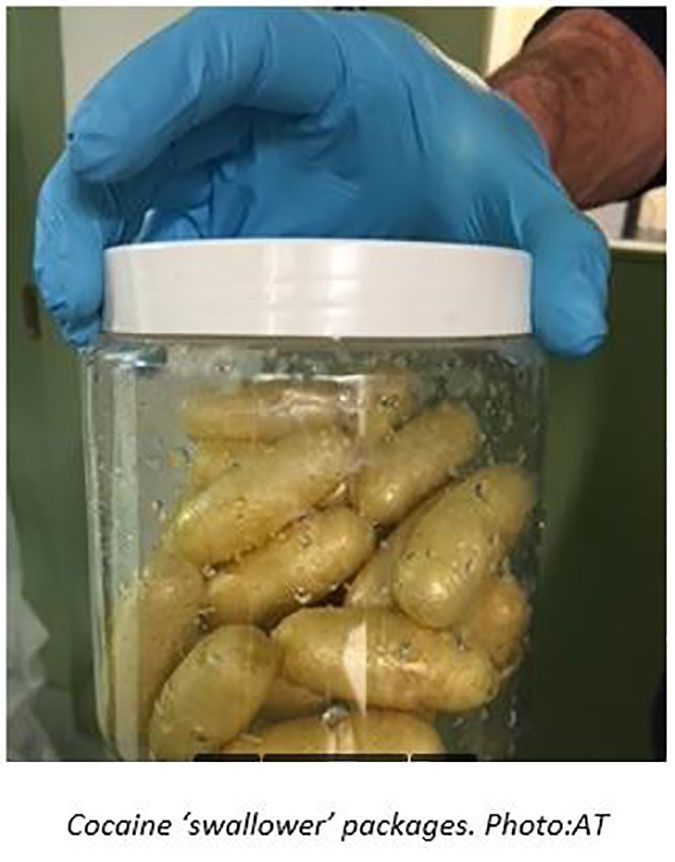
An increase of imported firearms on to the UK’s streets would be catastrophic given the current violent crime situation and there is trepidation as to how the situation will evolve post-Brexit.
One aspect of the drugs issue that has caused ridicule is the assertion that it’s the cocaine use by the white middle class which is driving the violence. Whilst they play a part, there is general agreement that cocaine use stretches across all classes and simply blaming one section of the community is arrant nonsense.
At some stage, efforts by the Met and other forces will bring about a reduction in knife crime albeit temporarily; indeed, according to Cressida Dick it is already slowing. This will be hailed from the rooftops as a triumph yet will have come about at the expense of other crime victims as police resources are diverted in order to stem the flow of blood onto our streets.
At present, crime figures show that nationally around two thirds of non-fatal stabbings remain unsolved. In London the figure is closer to three-quarters. Thus, the odds are that a thug who ‘non-fatally’ stabs a victim will never be apprehended.
We have now reached a point where the overwhelming majority of criminals know that when they commit a crime, unless it takes a life or is especially horrendous, they will ‘get away with it.’
Meanwhile, whatever they are faced with, beleaguered, exhausted police will do their best regardless. This from a tweet recently posted.
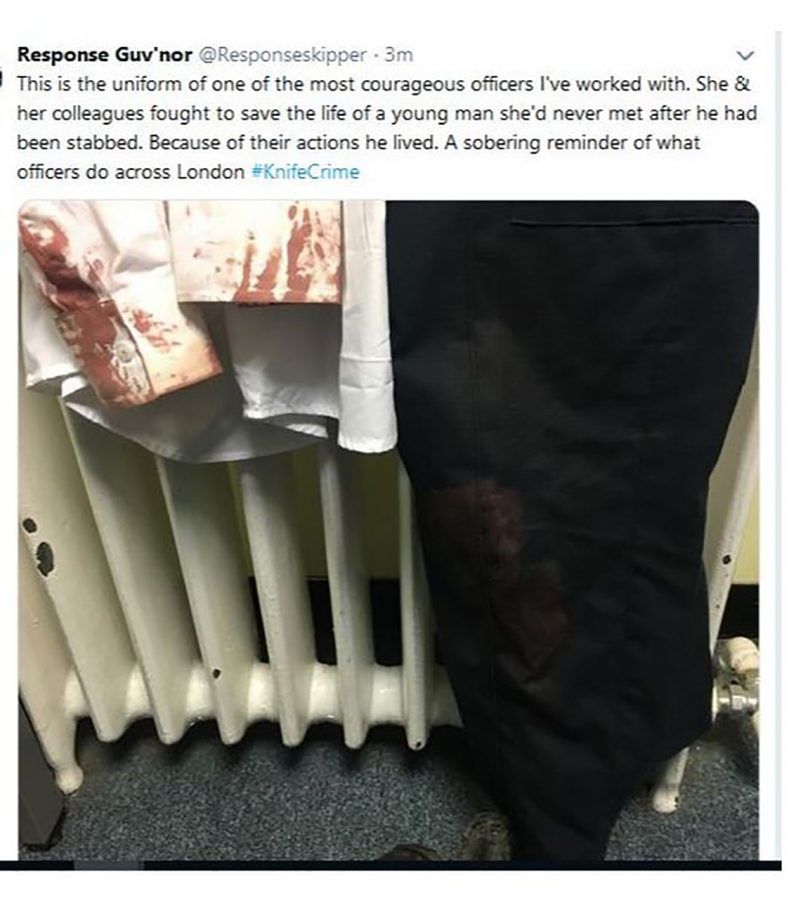
Finally, to state the obvious, the one group of individuals who indisputably have blood on their hands are those who choose to wield the knife, fire the gun or throw the acid.

